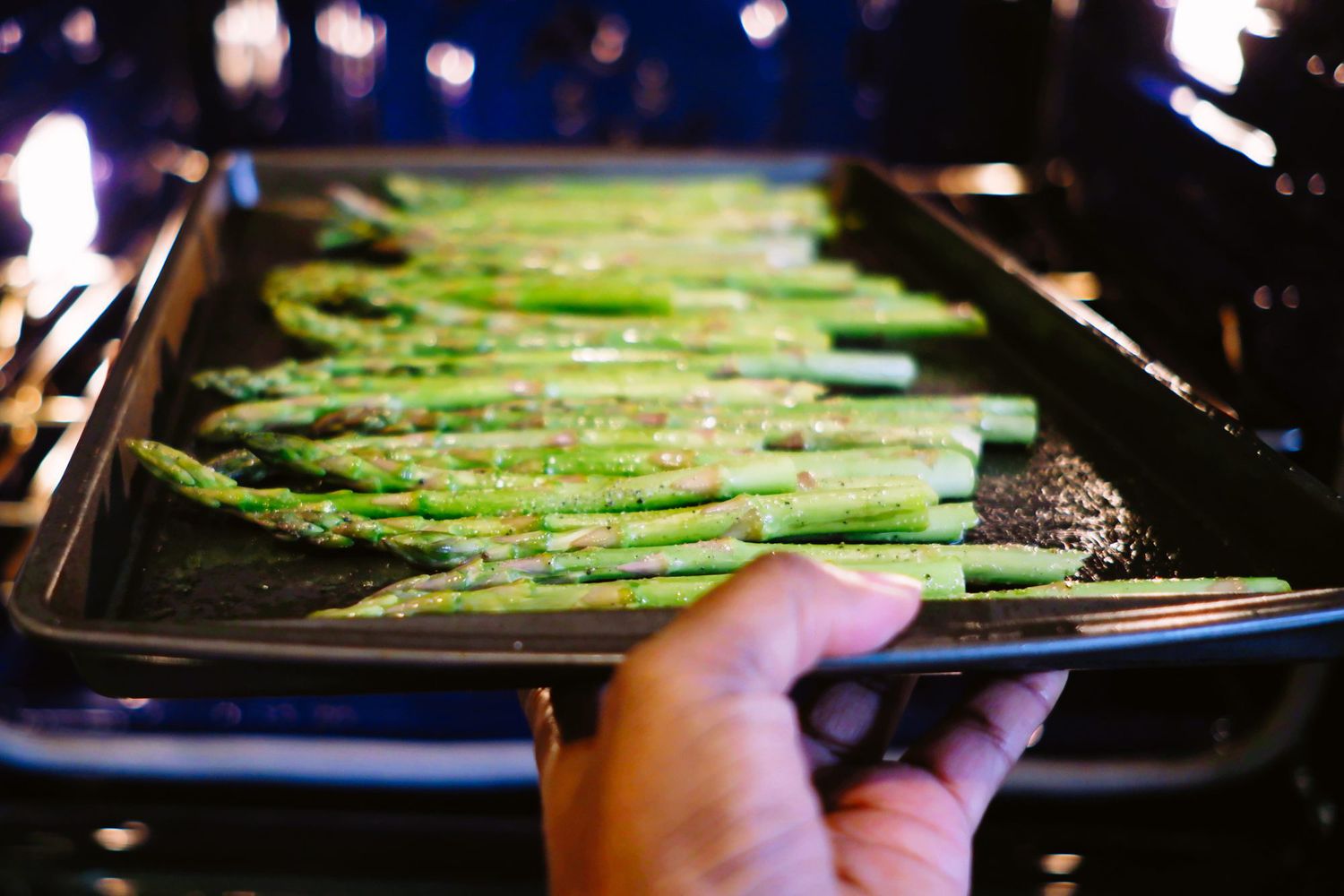Pans pop in the oven due to the thermal expansion of different materials. Uneven heating can cause parts of the pan to expand at different rates.
Why Do Pans Pop in the Oven:Picture this: you’re in the middle of a baking session, and suddenly there’s a loud pop from your oven. Startled? You’re not alone. Many home chefs have experienced this phenomenon, typically when metal pans are subjected to high temperatures. This reaction is more than a noisy surprise; it’s a lesson in physics.
As the oven heats up, the metal pan inside responds to the rising temperature. Metal expands when heated, and if your pan has areas of varying thickness or is made of different materials, these parts can expand unevenly. This uneven expansion results in stress within the pan, which can be released as a sharp pop. Understanding the science behind this can not only demystify the process but also help you select cookware that is less likely to react this way.
The Science Behind Popping Pans
When using an oven, you might hear a sudden pop. This sound can startle anyone. But what causes it? Let’s explore the science behind popping pans.
Material Expansion
Pans are made from materials that expand when heated. Metals like aluminum or stainless steel increase in size in a hot oven. This is due to the metal atoms moving faster and needing more space. As they push against each other, the pan can warp or twist slightly, leading to that popping sound.
Sudden Temperature Changes
Quick temperature shifts are also culprits. Imagine a cold pan suddenly placed in a hot oven. The rapid heating causes the material to expand quickly. This uneven expansion can result in a pop. Conversely, a hot pan splashed with cold water might contract rapidly, again causing a popping noise.
- Slowly preheat pans to avoid this.
- Avoid extreme temperature changes with hot cookware.

Credit: www.cookist.com
Common Materials That Cause Popping
Ever put a pan in the oven and jumped at an unexpected pop? Let’s explore why this happens by looking at common materials used in bakeware.
Metal Pans
Metal pans are popular for baking. They heat quickly. But they can warp or pop. This is due to temperature changes. Thin metal pans are more likely to pop. Choose thick, heavy-duty metal pans to reduce this risk.
Glass Dishes
Glass dishes can withstand oven heat. But they must heat evenly. Sudden temperature changes cause popping. Always preheat your oven. Place glass dishes in a preheated oven to prevent shocks.
Ceramic Bakeware
Ceramic bakeware is great for even heating. But poor-quality ceramics can crack. This happens with rapid temperature changes. Use oven-safe ceramics. Avoid moving from cold to hot too quickly.
Temperature’s Role In The Kitchen
Temperature plays a vital role in cooking and baking. Understanding how heat interacts with cookware is crucial. It ensures delicious outcomes. In kitchens, temperature management can mean the difference between a culinary success and a disaster. In this blog section, we explore why pans pop in the oven and how temperature control is key.
Preheating The Oven
Preheating is the first step to even cooking. An oven at the correct temperature ensures foods cook properly. Without preheating, pans receive uneven heat. This can cause them to warp or pop. Always allow the oven to reach the desired temperature.
- Prevents uneven baking
- Reduces cooking time
- Minimizes thermal stress on pans
Thermal Shock
Thermal shock happens when temperatures change quickly. If a cold pan hits a hot oven, it can pop. This is due to the rapid expansion of the material. Pans are designed to withstand heat, but sudden changes can be too much.
| Material | Thermal Tolerance |
|---|---|
| Stainless Steel | High |
| Glass | Varies |
| Ceramic | Medium |
To prevent thermal shock:
- Let pans warm up gradually
- Avoid extreme temperature changes
- Choose pans with high thermal tolerance
How To Prevent Your Pans From Popping
Popping pans in the oven can be startling. It’s important to understand why this happens. More importantly, know how to prevent it. This section provides practical tips. These ensure your baking is safe and pop-free.
Choosing The Right Bakeware
Selecting quality bakeware is essential. Not all materials are equal for oven use. Metal, ceramic, and glass are common. Each has its own heat tolerance.
- Metal is versatile. It heats up and cools down quickly.
- Ceramic holds heat well. It’s good for even baking.
- Glass is heat-resistant. But it needs careful handling.
Check the manufacturer’s guidelines. They tell the maximum temperature for each pan. Follow these closely to prevent mishaps.
Avoiding Sudden Temperature Changes
Pans pop often due to quick temperature shifts. Cold pans should not go into a hot oven. Let them warm up a bit first.
Similarly, don’t place a hot pan on a cold surface. This can cause cracking or warping. Use a trivet or pot holder instead.
Gradual temperature changes are key. They keep your bakeware intact. They ensure safety in the kitchen.
The Impact Of Oven Racks On Popping
Have you ever heard a loud pop in the oven? This sound can come from your pans. Oven racks play a role in this. Let’s explore how.
Positioning Your Bakeware
Where you place your bakeware matters. Centering your pans is key. This prevents uneven heating. Uneven heating can cause warping. Warping leads to popping sounds.
- Use the middle rack for best heat distribution.
- Avoid placing pans too close to the oven walls.
- Allow space between multiple pans for air circulation.
Material Of Oven Racks
Oven racks are usually metal. Metal expands with heat. Different metals expand at different rates. This can lead to noise.
| Rack Material | Expansion Rate | Potential for Noise |
|---|---|---|
| Stainless Steel | Low | Minimal |
| Chrome | Medium | Moderate |
| Aluminum | High | Noticeable |
Choose the right rack material. This can reduce popping noises. Always check your oven manual. It will guide you on rack material.
Credit: www.tiktok.com
Popping Pans: Myths Vs. Facts
Have you ever jumped at the sound of a loud pop in the oven? This common kitchen occurrence often leads to myths about what’s happening inside your oven. Let’s debunk some of these misconceptions and discover the truth with the help of research.
Common Misconceptions
Kitchen myths can lead to confusion. One popular belief is that pans pop due to poor quality. Another is that a popping sound signals that the oven is malfunctioning. Some even think that the noise is caused by the food cooking unevenly. Let’s explore what’s really going on.
- Poor quality pans pop more: Not necessarily true. Thickness and material affect a pan’s behavior.
- Oven malfunction causes popping: Rarely the case. Most ovens function well despite these sounds.
- Uneven cooking makes noise: It’s more about temperature changes than cooking consistency.
What Research Says
Research in material science provides clarity. Metals expand when heated. Sudden temperature changes can make pans warp, causing a pop. This phenomenon is known as thermal expansion.
| Material | Expansion Rate | Pop Likelihood |
|---|---|---|
| Aluminum | High | More likely |
| Stainless Steel | Medium | Less likely |
| Cast Iron | Low | Least likely |
It’s clear that material properties play a significant role. Moreover, sudden temperature shifts can cause stress in the material. This results in that distinctive pop sound.
Pans with even thickness and those designed for thermal shock are less prone to popping. Always preheat your oven to avoid sudden temperature changes. Choose the right pan for the job and expect some noise as part of normal oven operation.
Safety Measures For Handling Popping Pans
Welcome to our guide on ‘Safety Measures for Handling Popping Pans’. Pans can pop in the oven due to sudden temperature changes or trapped moisture. These pops can be startling and potentially dangerous. It’s crucial to know how to protect yourself and your kitchen.
Using Protective Gear
When pans pop, they can project hot oil or food. Wearing the right gear is essential.
- Oven mitts: Always use these to handle hot pans.
- Face shield: Consider a shield to guard against splatters.
- Apron: Wear a thick apron to protect your body.
Best Practices In The Kitchen
Follow these steps to keep your kitchen safe.
- Preheat: Always preheat your oven to avoid temperature shocks.
- Check for moisture: Dry pans and lids before heating.
- Use proper utensils: Tools like wooden spoons don’t conduct heat.
- Stay present: Don’t leave cooking food unattended.
- Keep a tidy space: Clean spills and remove flammable objects.
Advanced Tips For Baking Enthusiasts
Advanced Tips for Baking Enthusiasts unlock the secrets behind perfect bakes. Discover how to prevent pans from popping in the oven. Master these methods to elevate your baking game.
Experimenting With Materials
Pans pop due to thermal shock. Different materials react uniquely to heat. Let’s explore.
- Aluminum: Heats quickly, cools fast. Ideal for even baking.
- Stainless Steel: Durable, less prone to warping. Heats slower.
- Ceramic: Retains heat well. Ensure gradual temperature changes.
- Silicone: Flexible, prevents sticking. Heat-resistant up to certain temperatures.
Test these materials. Find what works for your oven and recipes.
Temperature Control Techniques
Stable temperatures prevent pans from popping. Use these tips.
- Preheat your oven. Ensure the right temperature before baking.
- Use an oven thermometer. Trust its accuracy over the oven’s display.
- Avoid drastic temperature changes. Introduce your pan to the oven gradually.
- Place pans in the oven’s center. It promotes even heat distribution.
Apply these techniques. Enjoy consistent results and silent baking sessions.

Credit: www.cookist.com
Frequently Asked Questions
How Do I Keep My Pan From Bending In The Oven?
To prevent your pan from bending in the oven, avoid sudden temperature changes. Preheat the oven gradually. Use heavy-duty, oven-safe pans. Distribute food evenly in the pan. Follow the manufacturer’s maximum heat guidelines. This approach ensures your pan remains flat and functional for longer.
What Happens If You Put A Pan In The Oven?
Putting a pan in the oven can lead to various outcomes depending on the pan’s material. Oven-safe pans handle high temperatures well, making them ideal for baking or roasting. Non-oven-safe pans may warp, melt, or release harmful fumes, posing safety hazards and damaging the pan.
Always check your pan’s oven compatibility.
Why Is My Pan Jumping In The Oven?
Your pan may jump in the oven due to uneven heating or a warped bottom. Ensure it’s flat and the oven heats consistently.
Why Did My Pan Shatter In The Oven?
Your pan may have shattered due to thermal shock from sudden temperature changes or because it wasn’t oven-safe. Always check the manufacturer’s guidelines before use.
Conclusion
Understanding why pans pop in the oven is essential for any cook. It boils down to materials and temperature changes. By choosing the right cookware and preheating correctly, you can avoid those startling noises. Remember, knowledge is power in the kitchen.
Keep these tips in mind for a quieter, safer cooking experience.





Leave a Reply